Sri Sarada Devi (Holy Mother)
Sri Saradamani Devi, called Sarada for short, the spiritual consort of Sri Ramakrishna, was born on 22 December 1853 in a poor Brahmin family in Jayrambati, a village adjoining Kamarpukur in West Bengal. She was later known and revered as the Holy Mother. Her father, Ramachandra Mukhopadhyay, was an orthodox, pious and kind-hearted man, while her mother, Shyama Sundari Devi, was a loving, innocent and hard-working woman. Before her birth, both the parents had had visions foretelling the advent of a divine being.
Marriage
As a child, Sarada developed into a gentle and guileless girl who never quarrelled with her playmates and often acted as a peacemaker among them. She spent most of her time in family duties such as helping her mother in the kitchen, picking cotton in the fields, feeding cattle, and carrying food to her father and other workers engaged in work on the farm. She had no formal schooling but managed to learn the Bengali alphabet, and over time, she could read the Ramayana and the Mahabharata. At age five, she was married to Sri Ramakrishna, according to the local traditions. After the marriage, however, she continued to live with her parents while Sri Ramakrishna lived a God-intoxicated life at Dakshineshwar.
Sarada had her first meaningful contact with her husband when about eight years later, Sri Ramakrishna visited Kamarpukur again. He discharged his duties towards his young wife by guiding her in spiritual and secular matters. He instructed her in spiritual disciplines such as non-attachment, prayer, meditation, self-control and household duties such as serving guests, respecting elders, travelling carefully etc. "At that time,’ she said later, "I always felt as if a jar full of bliss was placed in my heart. It is impossible to describe the fullness of that joy."

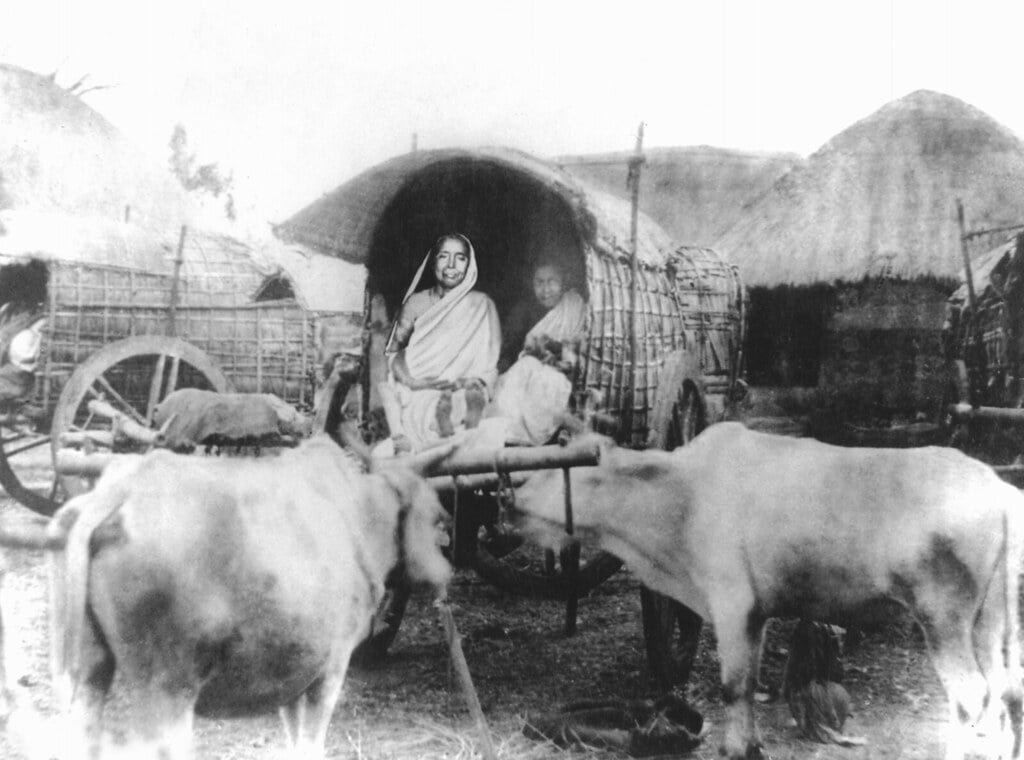
Visit to Dakshineshwar
She spent the next four years at Jayrambati. In the meantime, a report came to the village that her husband had become insane. She made up her mind to see the situation with her own eyes. At age eighteen, she walked to Dakshineshwar to meet her husband. Sri Ramakrishna, who had immersed himself in the intense practise of several spiritual disciplines for more than twelve years, had reached the highest state of realization in which he saw God in all beings. He received Sarada with great affection and allowed her to stay with him. Soon they developed an intimate relationship which, however, was completely pure. Sarada served Sri Ramakrishna as his devoted wife and disciple while remaining a virgin nun and following the spiritual path.
Life at Dakshineshwar
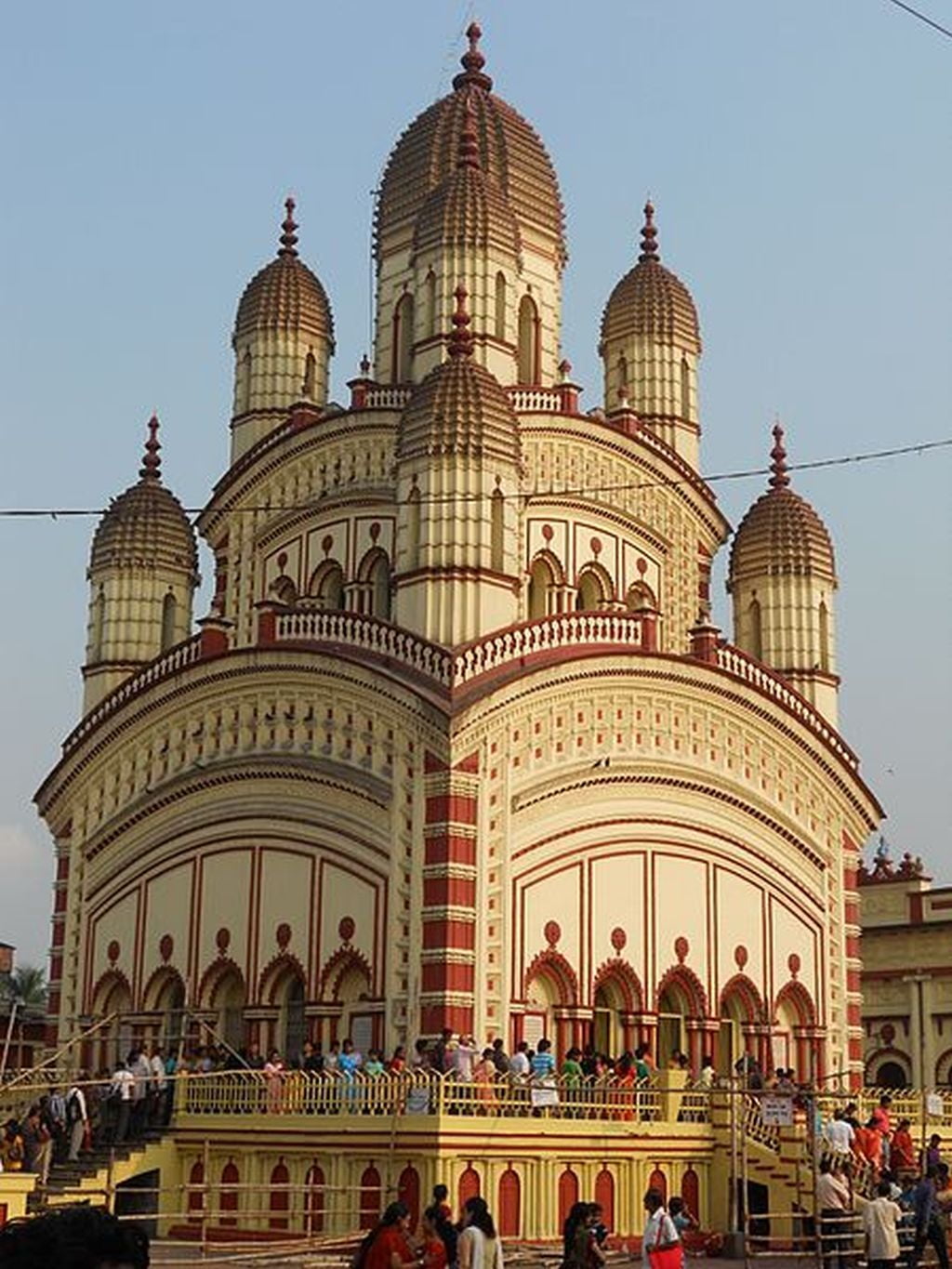
Sri Ramakrishna looked upon Sarada as a remarkable manifestation of the Divine Mother of the universe. In 1872, on the night of the Phalaharini Kali-puja, he ritualistically worshipped her as the Divine Mother, thereby awakening the universal Motherhood latent in her. When disciples began to gather around Sri Ramakrishna, she looked upon them as her children. She stayed in a small room at Dakshineshwar that had hardly any amenities. Often at night, she had to share her room with one or two women devotees of the Master.
Cooking took up a significant part of her time. She prepared separate meals for Sri Ramakrishna, who had a weak stomach, and the increasing number of devotees who came to see Sri Ramakrishna. But she bore all the difficulties silently and lived in contentment and peace as the joy of serving her husband outweighed all her physical privations.
Mahasamadhi of Sri Ramakrishna
Sri Ramakrishna was fully aware of Holy Mother’s divine nature and future mission. He gave her detailed instructions on how to awaken the spirituality of her future disciples. In 1886, after the Mahasamadhi of Sri Ramakrishna, she spent some months on a pilgrimage to Kashi and Vrindaban and then went to Kamarpukur, where she lived in great privation. Coming to know of her wretched condition, the disciples of Sri Ramakrishna brought her to Kolkata, where she began a new phase of her life. She now began to accept spiritual seekers as her disciples and became the open doorway to immortality for hundreds of people. Her great universal mother-heart, endowed with boundless love and compassion, embraced all people without distinction, including many who had lived sinful lives.
When the Western women disciples of Swami Vivekananda came to Kolkata, she accepted them with open arms as her daughters, ignoring the restrictions of the orthodox society of those days. Although she had grown up in a conservative agrarian society, without any access to modern education, she held progressive views. Hence she whole-heartedly supported Swami Vivekananda in his plans for the rejuvenation of India and the uplift of the masses and women. She was closely associated with the school for girls started by Sister Nivedita.
She spent her life partly in Kolkata and partly in her native village Jayrambati. During the early years of her stay in Kolkata, her needs were looked after by Swami Yogananda, a disciple of Sri Ramakrishna. In later years her needs were looked after by another disciple of Sri Ramakrishna, Swami Saradananda, who built a new house for her called Mayer Bari in Kolkata in 1910.
Although she was highly venerated for her spiritual status and worshipped as the Divine Mother, she continued to live like a simple village mother, washing clothes, sweeping the floor, bringing water from the pond, dressing vegetables, and cooking and serving food.
Mother of All
In the history of humanity, there has never been another woman who looked upon herself as the Mother of all beings, including animals and birds and spent her entire life serving them as her children, undergoing unending sacrifice and self-denial. On her role in the mission of Sri Ramakrishna on earth, she stated: “My son, you know the Master had a maternal attitude (Matri-bhava) towards everyone. He has left me behind to manifest that Divine Motherhood in the world.”
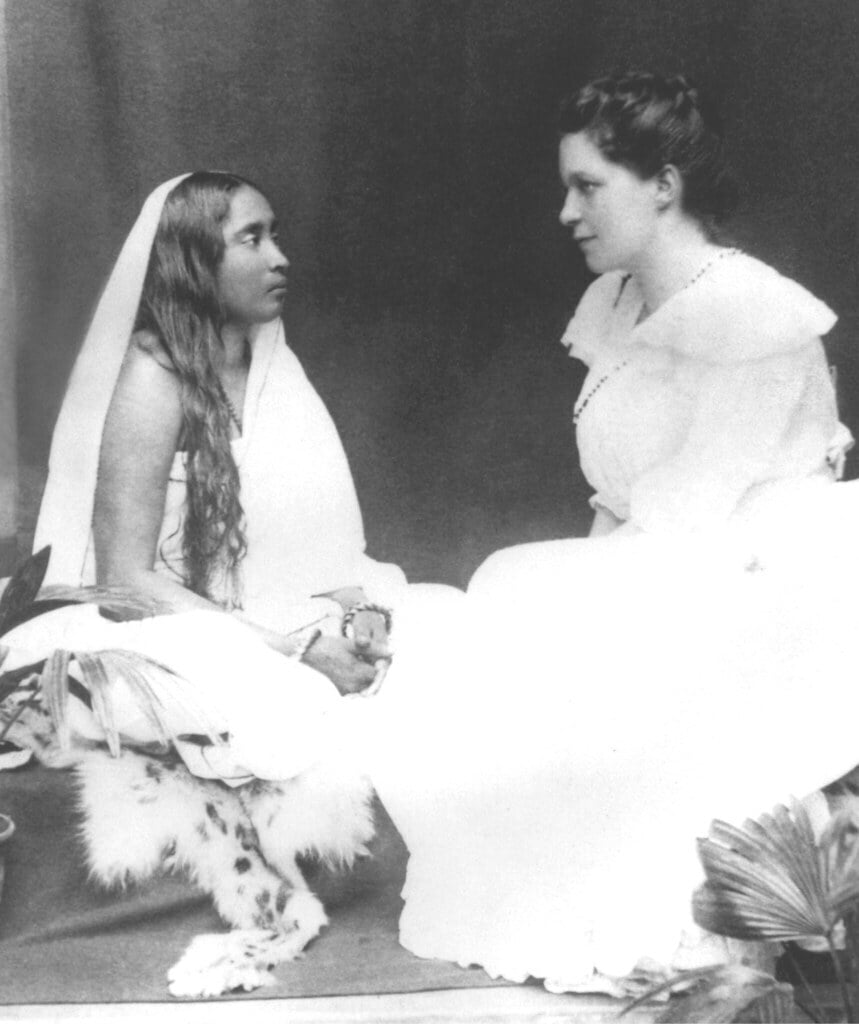
Last Days
She spent her final years moving back and forth between Jayrambati and Kolkata. In January 1919, Sarada went to Jayrambati and stayed there for over a year. For the next five months, she continued to suffer. Shortly before her death, she gave this last piece of advice to her grief-stricken devotees: "But I tell you one thing—if you want peace of mind, do not find fault with others. Rather, see your own faults. Learn to make the whole world your own. No one is a stranger, my child: this whole world is your own!" She gave up the body at 1.30 am on Tuesday, the 21 July 1920, at Mayer Badi (on the first floor of the Shrine Room), Kolkata. Her body was cremated at the Belur Math, and the place is now known as Holy Mother's ghat. Today a temple stands at that spot.
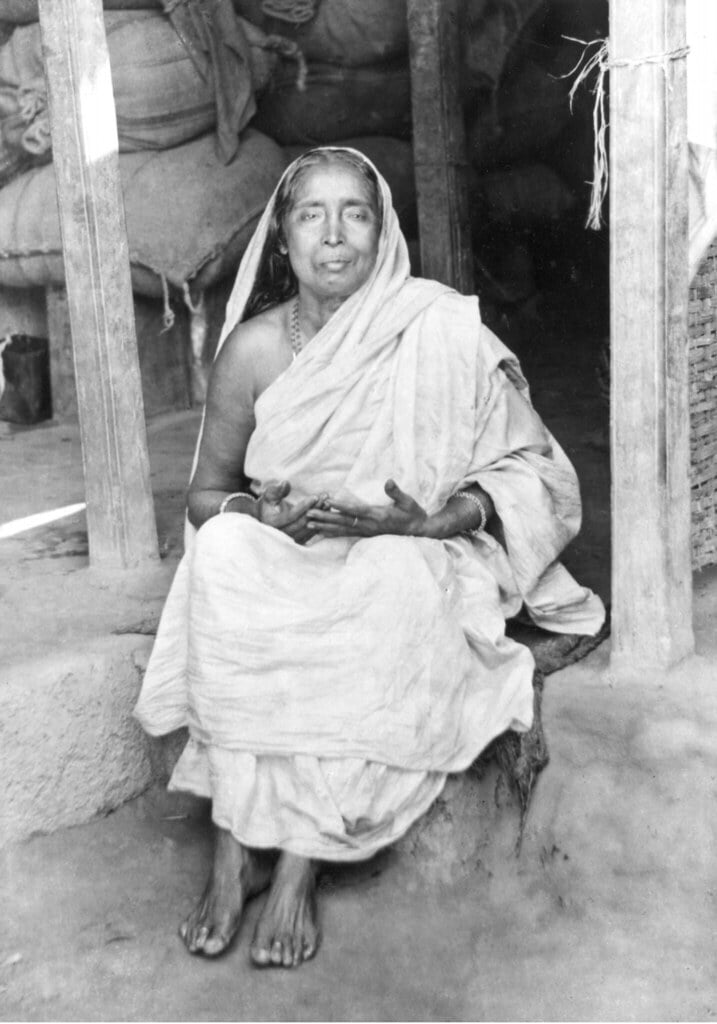
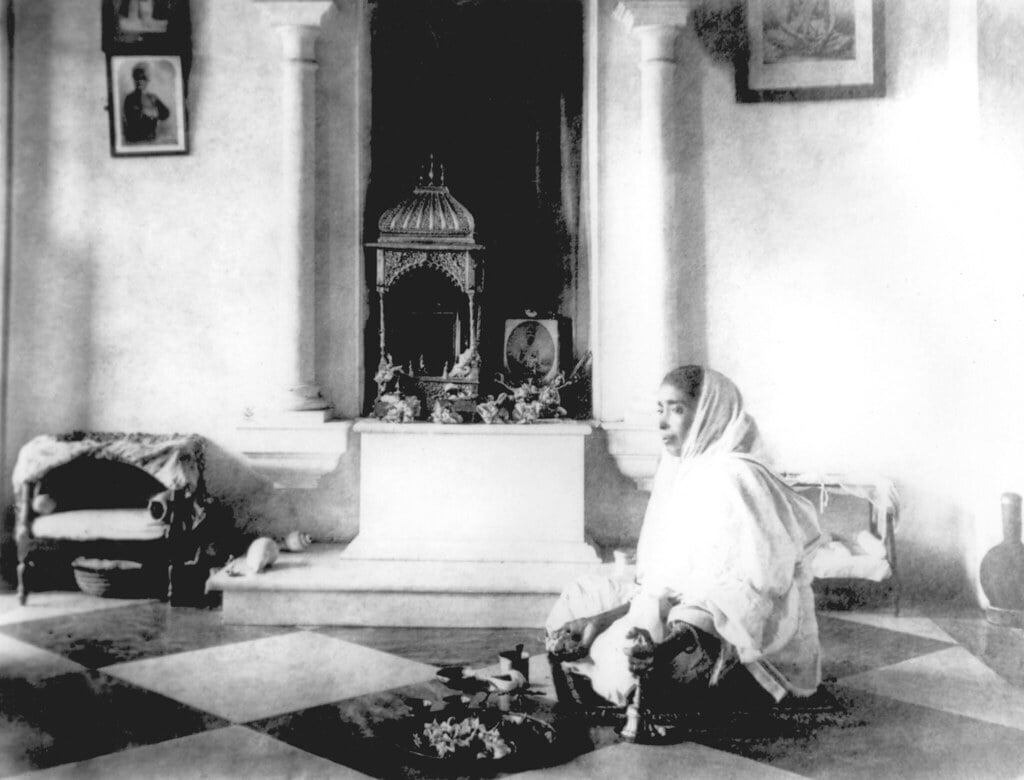
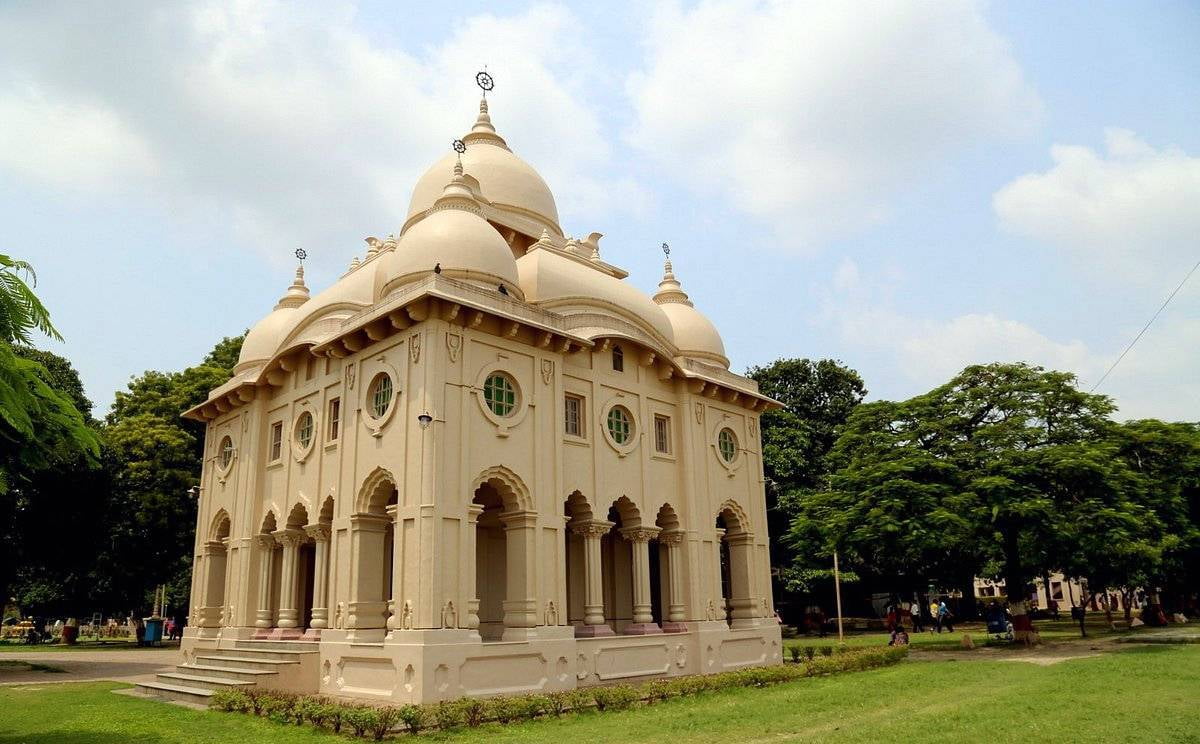
Important Teachings of Sri Sarada Devi
- Just as the clouds are blown away by the wind, so is the thirst for material pleasure removed by the utterance of the Lord's name.
- Just as water, which tends to flow downwards, is drawn up to the sky by the sun's rays, the grace of God likewise elevates the mind, which tends to run after sense objects.
- From desire, this body comes into being. When there is no desire at all, the body falls away. With the complete cessation of desire comes the eventual end.
- Practise meditation, and by and by your mind will be so calm and fixed that you will find it difficult to keep it away from meditation.
- One cannot escape the effect of one's past karma. But then, if a person leads a prayerful life, he gets off with only the prick of a thorn in the leg, which otherwise would have been a deep wound.
- Through spiritual disciplines, the ties of past karma are cut asunder. But the realization of God cannot be achieved without ecstatic love for him.
- If my son wallows in the dust or mud, it is I who have to wipe off all the dirt and take him into my lap.
- Don't puzzle the mind with too many inquiries. One finds it difficult to put one single thing into practice but dares invite distraction by filling the mind with too many things.
Recommended for further reading
- Sri Maa Sarada Devi by Swami Gambhirananda
- The Gospel of Holy Mother

